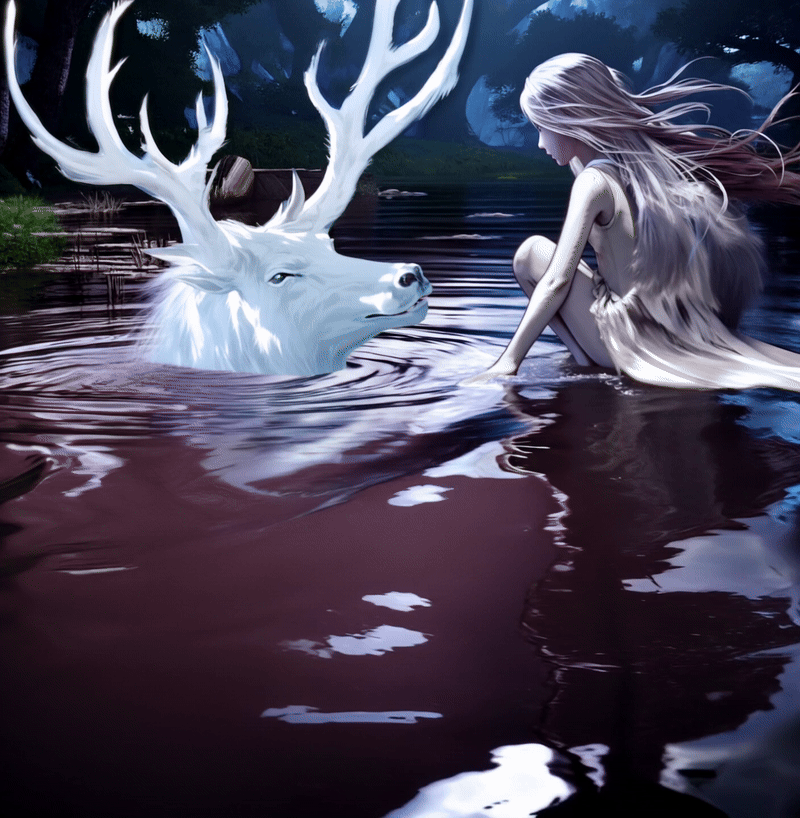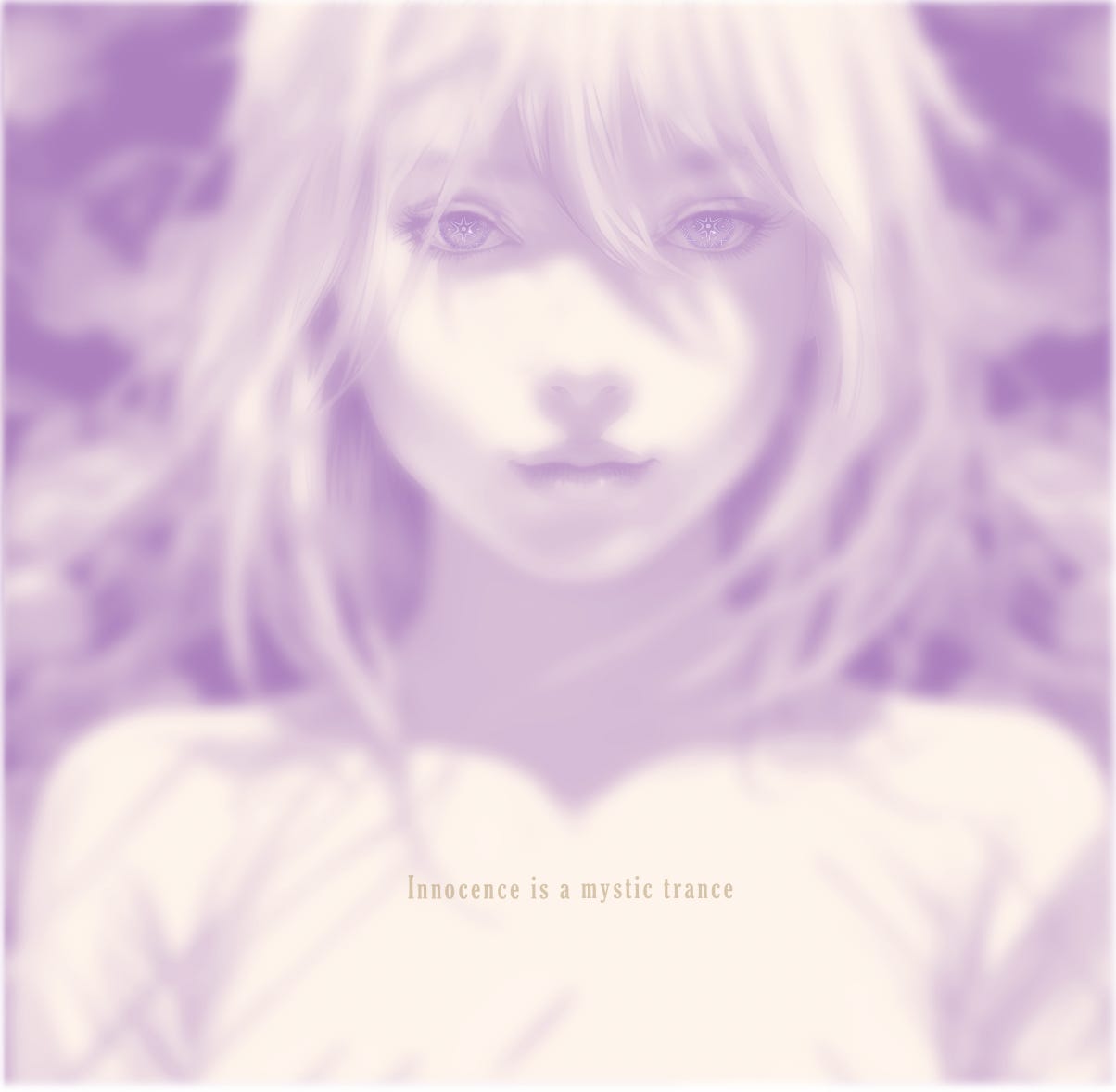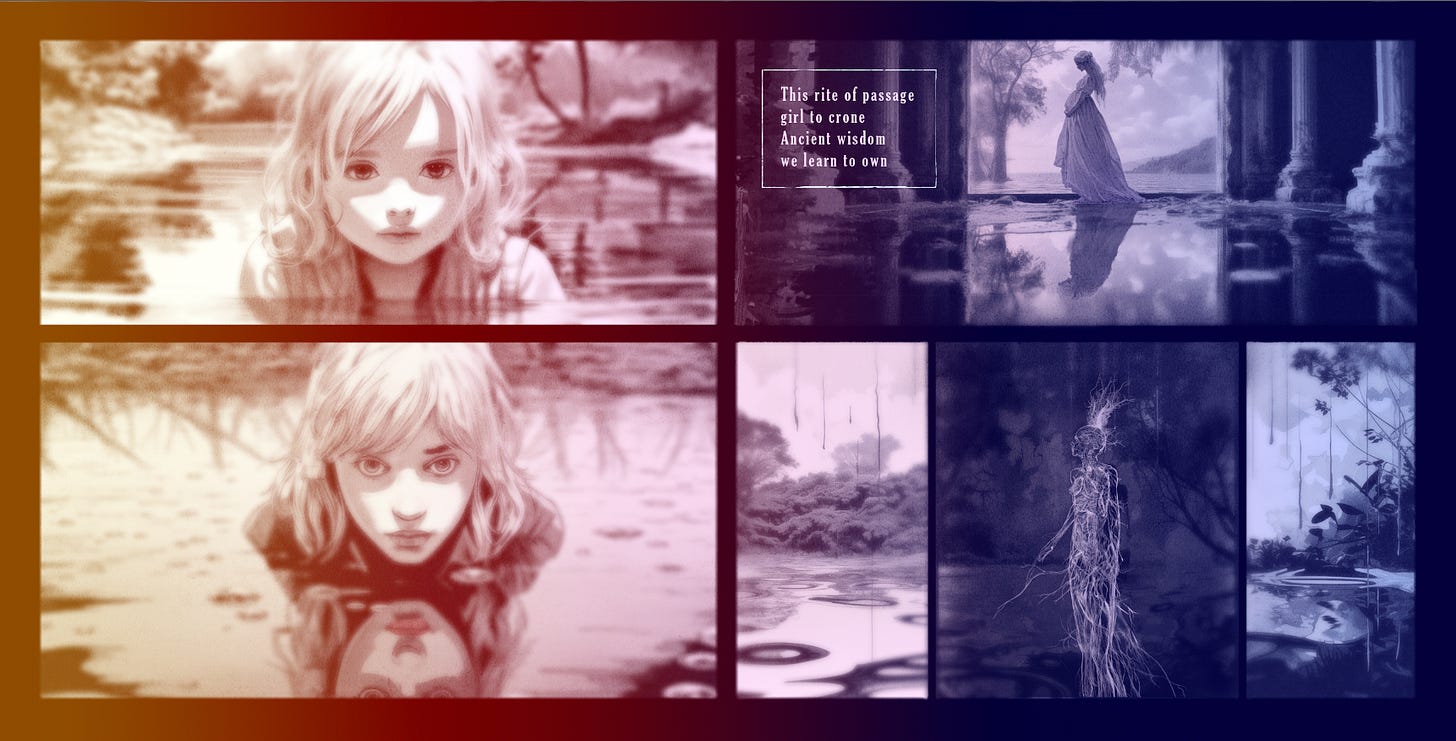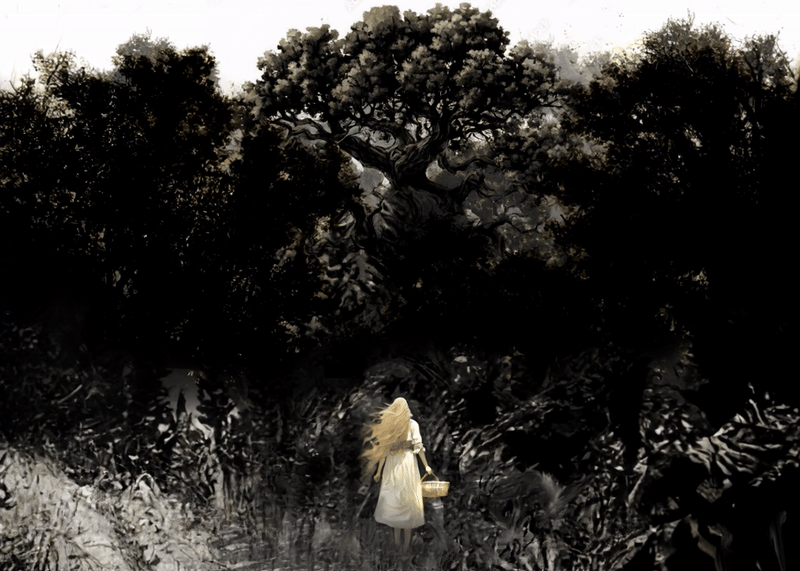
White Deer - Rites of Passage & Mythologist Dr. Sharon Blackie
There once was a girl who didn’t want to grow up.
One morning, her body began to change.
She didn’t feel ready.
She didn’t feel brave.
She didn’t feel like herself.
People smiled and said, “You’re becoming a woman!”
But no one asked if she wanted to.
No one told her what it would feel like.
No one warned her how strange the journey could be.
She wished she could stop it.
Stay a girl a little longer.
Growing up isn’t a race.
It’s a journey—like in old stories.
Like a hero with a map you can’t quite read yet.
There’s always a moment in those stories where the hero says,
“I’m not ready.”
In some cultures, girls are guided through this change with rituals, songs, and stories.
They’re taught that their bodies are sacred.
That change is powerful.
That the journey into womanhood is not something to fear—but to honor.
But in other places, girls go through it alone.
With whispered warnings, awkward books, or silence.
No map.
So what if we made our own map?
What if we said:
“It’s okay to be scared.”
“It’s okay to ask questions.”
“It’s okay to take your time.”
What if growing up could feel like a story where you are the hero?
A story where you meet wise helpers.
Find secret strength.
And know, deep down, that you are becoming something beautiful—
not because others say so,
but because you can feel it rising in your bones.
Art from White Deer - Rites of Passage graphic novel
Not every child welcomes the approach of adolescence. For some young girls, this onset is not a sign of growing up, but a source of dread. These are cases of distinct emotional resistance to the physical and social transformations that come with becoming a woman—breasts, menstruation, public attention, changing expectations. In many cases, it reflects a deeper cultural discomfort around female changes and a lack of meaningful support during this pivotal time.
Drawing from cultural mythology, psychological theory, and traditional rites of passage, we can begin to understand why some girls resist growing up—and how story and ritual might offer a bridge between fear and transformation.
Much like the archetypal Peter Pan, who famously refused to grow up, these girls push back against what puberty demands of them. The mythic framework offered by Psychologist/Mythologist Dr. Sharon Blackie, provides a compelling way to understand this refusal—not as weakness, but as part of a deeper psychological transformation.
THE CALLING:
According to Blackie, every transformative journey begins with a “Calling,” followed by a “Severance” “Descent,”, and “Rootedness.”
"It is a Call to Life – a full, authentic life.”
For many girls, adolescence is that “calling.” However, the call of puberty may come in the form of physical changes they did not ask for.
This “calling” may initially be refused. This refusal is meaningful: it reflects fear, unpreparedness, or attachment to their known world. This resistance echoes the hesitation of countless mythic figures who feared what lay beyond the threshold.
This is where cultural myths, symbols, and rites of passage become essential. Many societies across history have used ritual to mark the shift from childhood to adolescence, particularly for girls. Ceremonies around the world such as the Navajo’s Kinaalda, the Ghanaian Bragoro, or South India’s Ritu Kala Samskaram transform biological change into communal celebration. These rituals provide mentorship, symbolic rebirth, and social acknowledgment—three pillars that help ease fear and redefine growth as an achievement.
In contrast, modern Western culture offers little guidance—leaving girls to face these changes with confusion, fear, or embarrassment. Without myths, mentors, or rituals, the transition can become fragmented, potentially traumatic.
Art from White Deer - Rites of Passage graphic novel
SEVERANCE:
The young heroin in White Deer – Rites of Passage knows change is coming to her life, and is resistant to it, however her instincts push her through a fantastical personal journey of mystery, and risk, toward higher guidance.
"The path will vanish behind you: there’s no way back now.”
DESCENT:
When resistance turns to terror, she flees deeper into unknown territory finally ending up at the temple of White Deer, who become her guides of initiation.
Blackie explains this is the symbolic death of the old self— the ego unraveling before rebirth.
ROOTEDNESS:
She learns there is wisdom in the nature of who we are, within us and around us.
"To rise up rooted, like trees … this is what the world needs now.”
When story and art reframe a challenge as a meaningful quest, rather than a disruption, we are offered a powerful imaginative bridge across the unknown.
Can fairy tales offer modern youth a culturally resonant mythos to replace what industrialized society has lost? The White Deer story mirrors some of Blackies’s mythic structure, specifically to create a space where girls confront change not as an ending, but as a beginning of their own heroine’s journey.
"Stories and myths really are key to our very necessary transformation, because humans are storytelling animals, for sure. We begin to perceive, explain and make sense of the world through the stories we find in childhood – or the stories which find us. They are the stars we navigate by, and our traditional folk and fairy tales are the brightest stars of all. In fairy tales, the tasks which must be undertaken are the stuff out of which souls are forged.”
In a world where traditional rituals are fading and puberty is often hidden behind taboo or embarrassment, while girls are expected to come of age faster than ever, their resistance to growing up is not irrational—it is deeply meaningful. Their fears reveal what our culture fails to provide: communal rites, compassionate storytelling, and mythic symbols that dignify transition.
Can rebooting our mythic imagination begin to restore what has been lost? While story and myth may not erase fears and anxieties altogether; they might transform them into something bearable, even beautiful.
Animation test from White Deer - Rites of PassageThe girl stood at the edge of the forest and listened to the trees.
She heard the stories rustling there—
not just of her own fear,
but the voices of others who had stood where she stood.
Some walked in quickly.
Some tiptoed.
Some ran back again and again.
Then…
With basket trembling in her hand,
She ventured forth, a soul unplanned,
Forgetting fears and doubts untold,
She watched the forest’s heart unfold



